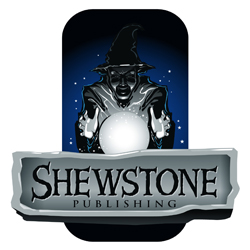Werewolf, Infernal
Aspects: Fantastic (+6) Possessed by Infernal Rage
Resistant to Nonsilver Weapons
Skills:
Fantastic (+6) Fighting
Good (+3) Athletics, Notice, Physique, Will
Stunts:
Long-Distance Runner: +2 to Athletics Actions related to distance running.
Spells:
Fantastic (+6) Possessed Infernal Rage: The infernal werewolf is a dark magician who voluntarily becomes possessed by a bloodthirsty demon of rage. The Aspect Possessed by Infernal Rage is considered a Haunting (not a Curse), and any attempt to treat it must overcome its Fantastic (+6) Potency. The possession is always active, even when the werewolf is in human form, so it can be Compelled (for example) to make them lose their temper and perhaps reveal a clue that they’re possessed.
Good (+3) Wolfskin Belt. Talisman, Conjuration. 10 minutes onstage preparation. The infernal werewolf uses a dark magic ritual to change shape. At or before the conclusion of the ritual, they strip naked and put on a wolfskin belt. This transforms them into a large, quadrupedal beast. They retain their human intelligence but their Aspect, Possessed by Infernal Rage, comes to the foreground and dominates their actions. The transformation lasts until the werewolf falls asleep or until the next sunrise, whichever comes first.
Stress:
Physical: ooo ooo ooo
Mental: ooo o
Consequences:
Mild _________________________
Moderate _______________________
Equipment:
Vicious teeth, Weapon: 1
This werewolf is a hybrid of sixteenth-century and modern concepts. The modern touch is that the werewolf is Resistant to Nonsilver Weapons. If you’re a folklore purist, simply remove this Aspect. If you retain it, the Aspect doesn’t grant complete immunity to physical attacks: the GM has to Invoke it to aid the werewolf’s Defend Action.
In Renaissance folklore, a werewolf is a dark magician who uses a spell to transform into a four-legged wolf. They do this to take vengeance upon their greatest enemy, but once they made their infernal deal and become Possessed by Infernal Rage, they can’t resist using the spell again to attack the next person they hate or fear, then the next, then the next . . .





